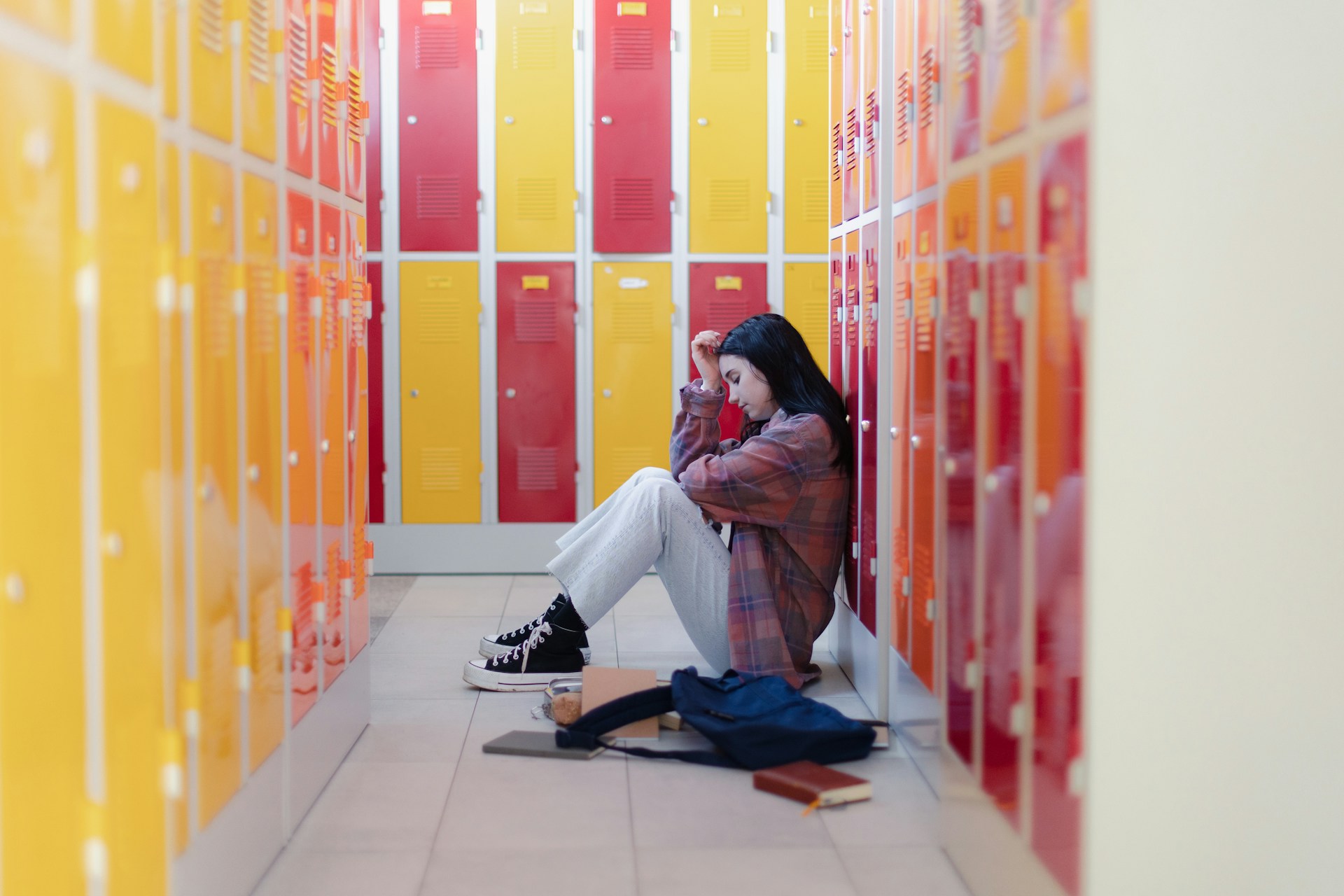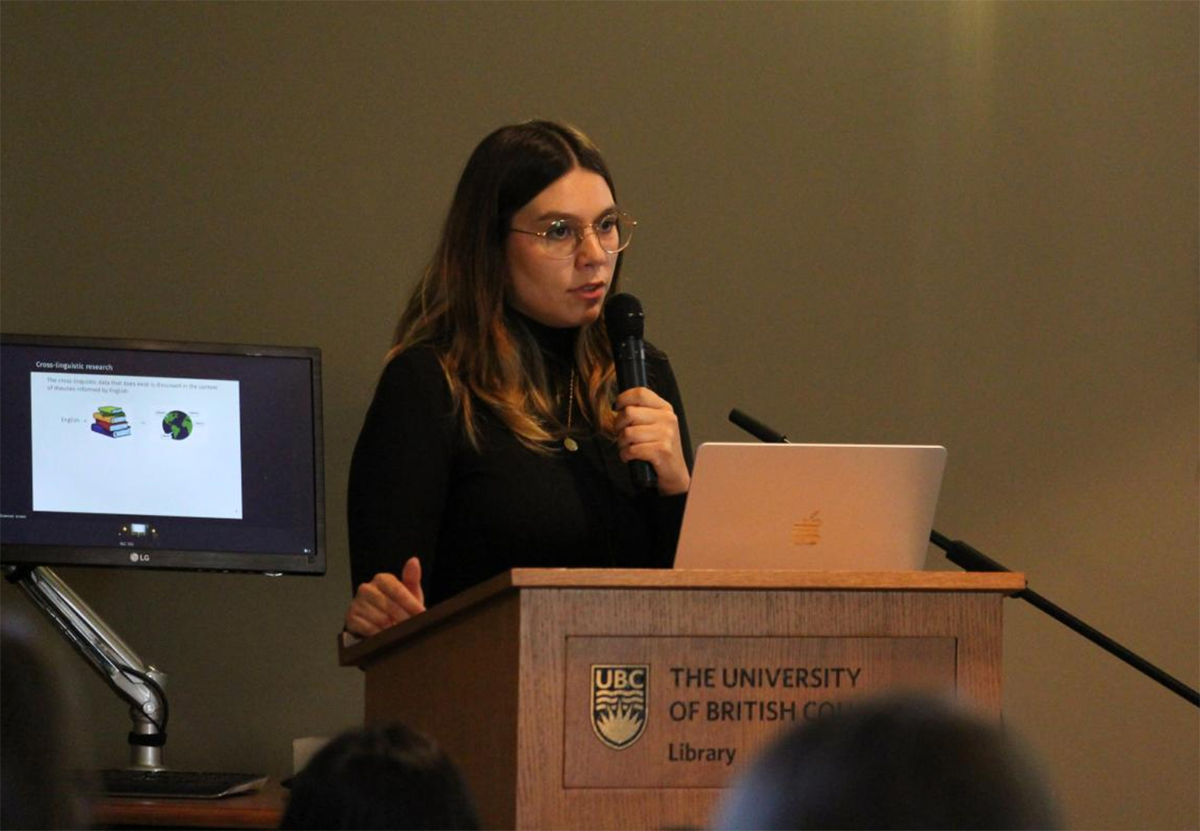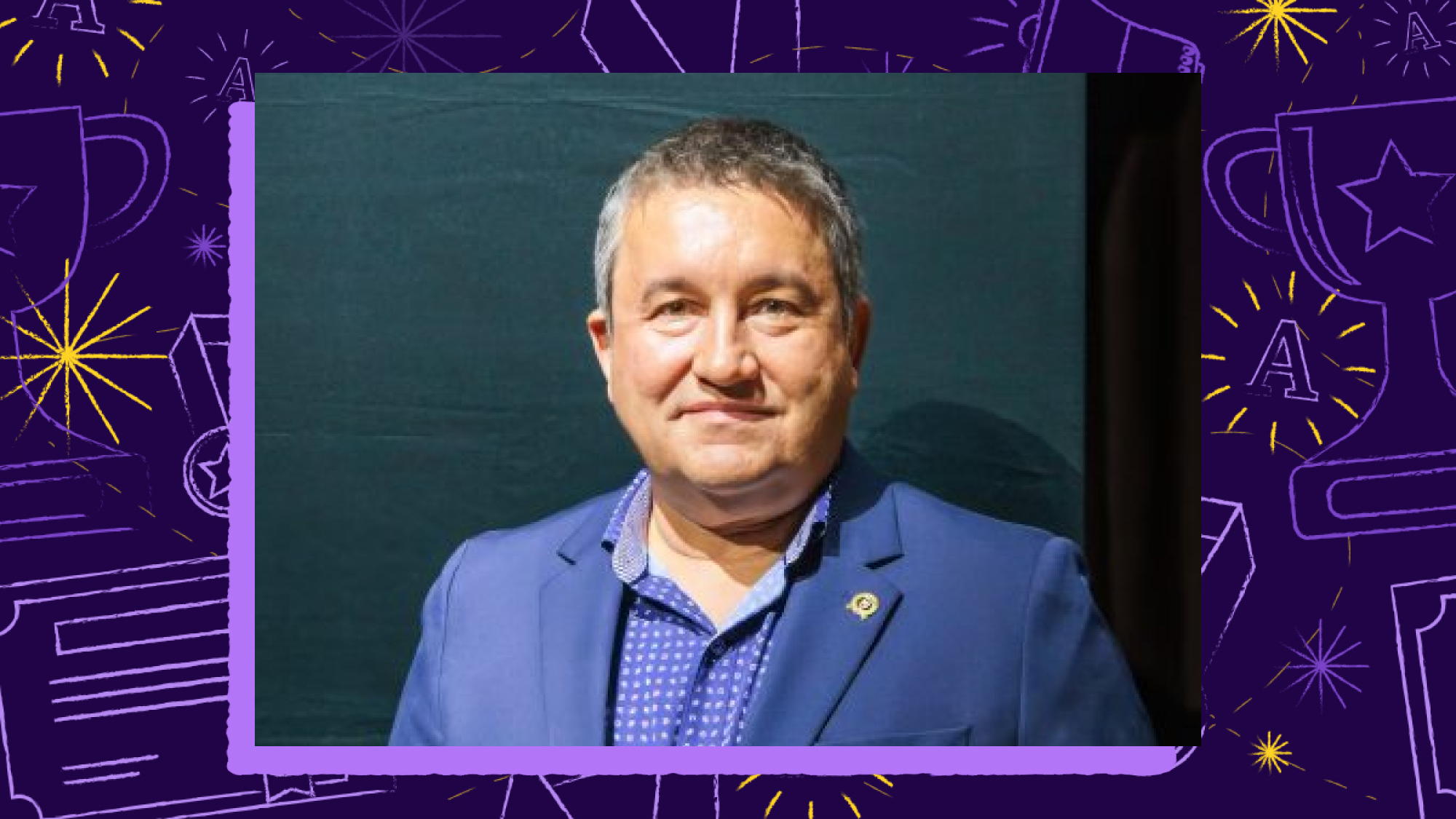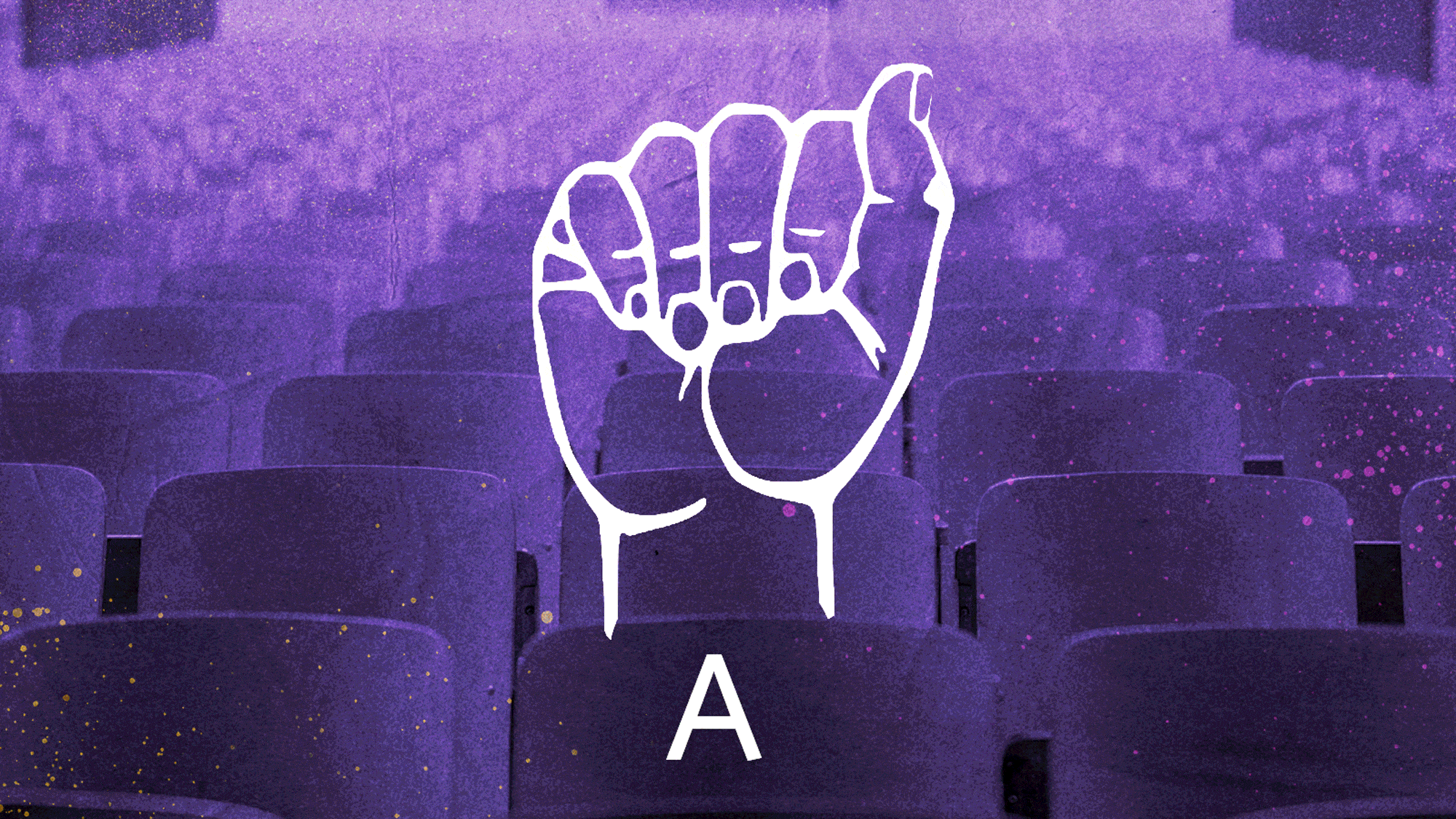

UBC Faculty of Arts celebrates International Week of the Deaf by learning more about the Deaf culture, sign language, and the importance of visual accessibility. Nigel Howard is a leading example of what it means to create a welcoming learning environment, through his work with the Department of Linguistics. In this Q&A, he shares his perspective on what it means to be truly inclusive in higher education.
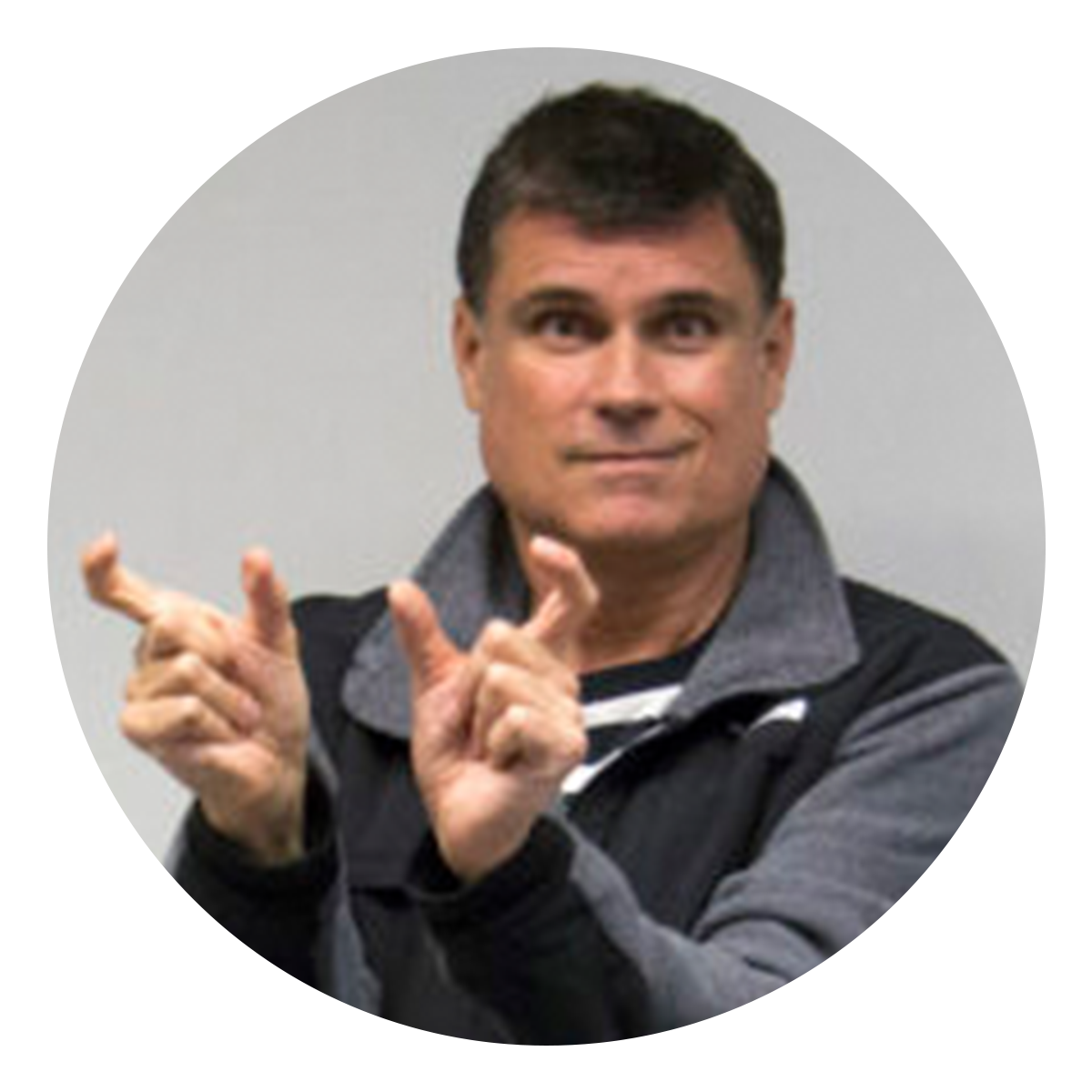

Nigel Howard (he/him)
Nigel is an adjunct professor in the Department of Linguistics and a member of the Language Sciences Institute. His courses include ASL 100 and ASL 101, which focuses on an introduction to sign language and learning how to create meaningful connections with members of the Deaf community.
Can you tell us about the Deaf community and the broad range of sign languages?
The Deaf community is a linguistic and cultural minority community. Although society has a social construct that we are disabled, we view ourselves as a linguistic minority that uses sign languages. There are sign languages all over the world and each one has its own cultural context.
For many Deaf people, English could be their second, third or their fourth language. Given the diversity of Canada, many people come with other first languages and learn English and American Sign Language (ASL) much later.
Are there preferred terminologies or phrases we need to stop using?
We talk about ourselves as the Deaf person or the Deaf community. Never use the phrases Deaf-mute, Deaf-dumb, hearing-loss or hearing-impaired. These are inappropriate and imply that there’s something wrong or lesser. There’s nothing wrong with me.
“I don’t need to be viewed as a person who doesn’t speak very well. I’m a human being. I need to be viewed as a person who happens to use ASL as my first language, and I read and write in English.”
How would you define inclusion and accessibility?
Some people think inclusion means to include everyone equally. But it’s a different context for the Deaf community. The word inclusion is interesting because if we’re talking about school, when there’s multiple Deaf people there, that’s great. If there’s just one Deaf person within an entire hearing classroom and one interpreter, is that inclusion? Are they really part of the conversation? You can say, the Deaf person has access to the classroom because you’ve got an interpreter, but there’s just layers of what it means to be included in that space. There’s the social development of relationships, friendship circles, peer learning that goes on in conversation, among others.
But inclusion is not a place, it is the experience, so that means the Deaf child has opportunities to use sign language with peers, be included in all aspects of out of classroom activities like sports, drama clubs, etc, and to be able to experience an environment where there are adults and children who use sign language. When teachers can sign and teach in ASL directly, without an interpreter, and when there is a critical mass of Deaf students, you replicate the experience that hearing students have – that’s an inclusive experience with no barriers to communication and learning.
“When everything is mediated through an interpreter, it means the Deaf child does not experience education in the same way as the hearing students – every experience is tied to one adult who may or may not use sign language. In the end it’s a very isolated experience, socially, academically and intellectually for many Deaf students.”
One shift that people need to understand is that the sign language interpreter is for both of us. You cannot use ASL, so you need the interpreter to converse with me. It’s not just an “interpreter for the Deaf”.
What has your UBC experience been like?
Others view UBC as a very traditional university, but I’ve seen the shift. I think the [Deaf] community often views it as an inaccessible and conservative place, but my experience would defy that perception.
I still have the original letter from 1982 that I used with UBC where I was able to enter university with my two languages. I didn’t have English and French, I fought for having English and ASL.
The institution over the last couple of years has been phenomenal. Certainly, the Department of Linguistics has been extremely supportive of the development and the use of ASL on campus. As for the inclusion of ASL and Deaf culture, I see UBC being very open to expanding their course offerings, which will then I hope, influence a paradigm shift that Deafness doesn’t have to be fixed.
It’s nice to see more and more students taking courses that I think sensitize them to a social-cultural model of being Deaf as opposed to the medical model.
Can you explain visual accessibility and how it impacts different learning styles?
When we think about you as a hearing person, you have been included in the hearing approach all your life. I had to learn a different way and take everything through my eyes. That doesn’t mean your way of learning is superior to mine – we are equal. If I have access to visuals, I have access to learning.
A simple example would be fire alarms. Inclusion would mean that the fire alarm is visually accessible, not just auditory.
Many people think that Deafness is all about the ears. That’s a social construct influenced by the medical view of things that we “can’t do” which is inaccurate.
Often, Deaf people with outstanding abilities feel like they’ve hit a glass ceiling. We need to take some steps in order for us to address those gaps by seeing ASL represented on campus. If they feel like the university is more accessible, those students could be doing degrees in various specialties like law or medicine.
What is your top tip that faculty and staff should keep in mind when preparing teaching and learning materials or events?
If they are using video material, make sure that it’s captioned or accessible through a professional interpreter, sign language, or adding Picture-in-Picture (PIP). The argument is always “it’s too expensive,” right? We have to set that argument aside because at the end of the day, we’re talking about having an inclusive learning environment. If you want to encourage Deaf students to come in at the Bachelor’s degree level, pursue masters and then doctorates, that’s how you do it.
There are ways for us to be student-focused. If we’ve got Deaf students, I think that professors need to allow students to have some element of choice to be able to use their language, American Sign Language or written English for their assignments. There are even academic ASL standards for a visual presentation that could be equal to a written paper.
I think it’s really important that the university have well-trained interpreters and ASL translation on their website so that students feel welcome.
“ We need to shift the mindset to what’s the potential that these students bring to the university? They could be one of our most outstanding Deaf scientists in any field.”
There are approximately over 350,000 Deaf and possibly over 3 million Hard of Hearing Canadians, according to the Canadian Association of the Deaf – Association des Sourds du Canada. As a leading institution, it is vital that we recognize and learn more about the Deaf community, their needs and culture, to create a more encouraging environment for various learners.
From a checklist of considerations to available resources, download Nigel’s full list of recommendations and tips.
Visual Accessibility tips
The purpose of this visual accessibility checklist is to provide a rundown of best practices for faculty and staff to consider applying in their teaching and learning materials, as well as workshops or events. This focuses particularly on visual accessibility for Deaf persons.
This resource was created in partnership with Nigel Howard, adjunct professor at the Department of Linguistics and member of the Language Sciences Institute.
“In terms of our university landscape, I think we have so many opportunities across departments and faculties to be a much more visually welcoming environment so that Deaf students can see themselves represented in the academic life and the culture of UBC,” says Howard.
American Sign Language
Professional interpreting services are meant for everyone in the classroom including the spoken language, Hard of Hearing, and Deaf persons. With the different linguistic communities present, interpreters bridge that gap and make the conversation equally accessible to all participants.
- Hire a professional American Sign Language interpreter:
- Lighting is key to ensuring the interpreter can be seen clearly
Assignments
On equal access and accommodation, professors are encouraged to move beyond the traditional format of written assignments and consider multi-modalities. Some examples include:
- Videos
- ASL, which has an academic register and standards for visual presentations that could be equal to a written paper.
For ASL, Howard shares “If students are learning a language, they should be able to do their assignment in that language, just as they would in a spoken language assignment. It’s about shifting perceptions and recognizing that we’re a linguistic minority.”
Video materials
There is a wide variety of learning methods and skill levels when it comes to sign languages. Not all Deaf people have sign language abilities. While some might be fluent, there are other learners with Cochlear implants or who became Hard of Hearing later in life. With that said, having different entryways to “reading” the material is encouraged.
- Make sure that the video you’re providing has captioning – if closed-captioning, it may be inaccessible – captions support all learners, not just Deaf learners.
- Consider incorporating Picture-in-Picture (PiP) to your video.
- UBC Student Services Centre for Accessibility can provide support if you need assistance making your video material more accessible. This includes:
- Transcription for your non-captioned video
- Provide an American Sign Language interpretation of that video
Websites and promotional materials
According to Howard, websites are the first step for making UBC more welcoming to prospective Deaf and Hard of Hearing students by ensuring their culture is represented.
- If an interpreter is available, include it in your advertisements such as the landing page and promotional materials.
- Answer the question “Is this image promoting access?”
- Some examples of access-focused web pages include: BC Centre for Disease Control and Gallaudet University
Other resources
BC’s Post-Secondary Communication Access Services (PCAS) is a province-wide service for Deaf and Hard of Hearing students. PCAS provides information on how-to access interpreting, speech-to-speech services, note-taking, assistive technology and more.
Provincial Medical Sign Language Interpreting is responsible for the delivery of sign language interpreting and intervenor services in health care. It is available 24/7 for the Deaf and Hard of Hearing community of BC.
